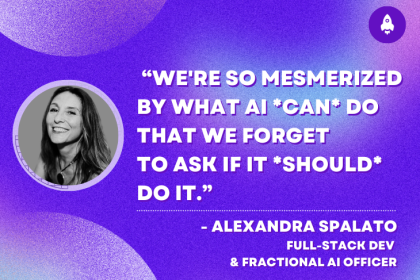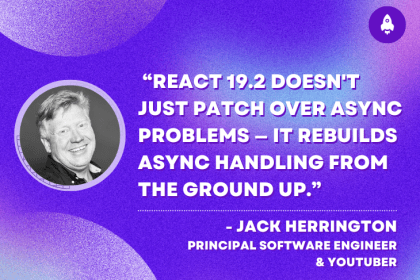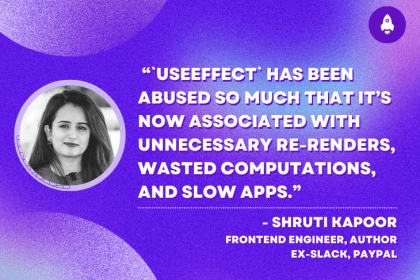
As a developer, it’s easy to feel like you need to integrate AI into every feature and deploy agents for every task. But what if the smartest move isn’t to use AI, but to know when not to?

Jack Herrington writes about how React 19.2 rebuilds async handling from the ground up with use(),

useEffect mistakes to avoid in your React appsShruti Kapoor breaks down the confusion around useEffect and goes over 15 common mistakes she’s seen in the React apps she’s reviewed.

Compare the top AI development tools and models of November 2025. View updated rankings, feature breakdowns, and find the best fit for you.

A senior developer discusses how developer elitism breeds contempt and over-reliance on AI, and how you can avoid it in your own workplace.

Learn about the new features in the Next.js 16 release: why they matter, how they impact your workflow, and how to start using them.

Build fast, scalable UIs with TanStack Virtual: virtualize long lists, support dynamic row heights, and implement infinite scrolling with React.

CI/CD isn’t optional anymore. Discover how automated builds and deployments prevent costly mistakes, speed up releases, and keep your software stable.

A quick comparison of five AI code review tools tested on the same codebase to see which ones truly catch bugs and surface real issues.

An AI reality check, Prisma v7, and “caveman compression”: discover what’s new in The Replay, LogRocket’s newsletter for dev and engineering leaders, in the November 26th issue.

RippleJS takes a fresh approach to UI development with no re-renders and TypeScript built in. Here’s why it’s gaining attention.

Small qualitative samples aren’t a weakness. They’re a strategy. This guide breaks down the evidence, the mindset gap, and how to build trust around research decisions.

Coming from C# can quietly sabotage your TypeScript code. This article shows how to swap nullable flags and enums for discriminated unions and literal types so your Angular apps model state cleanly and stay easy to reason about.

Learn why slide decks slow teams down and explore better tools like whiteboards, PRDs, and prototypes to improve collaboration and alignment.

From pixel art to neon palettes, retro design is resurging across marketing, gaming, fashion, and indie web. Learn how nostalgia, brand differentiation, and anti-minimalism fatigue are shaping modern UX and how to balance style with usability.

90s website design was a maximalist playground of GIFs, bold colors, quirky fonts, and textured layouts. Learn how this experimental era influenced modern flat design, UX principles, and the nostalgic design trends of today.

Nostalgic design taps into familiar visuals and interactions to trigger happy memories, boost engagement, and foster brand loyalty. Learn how typography, color, sound, and retro patterns can evoke positive emotions while keeping your UX accessible and functional.

You can use 90s-inspired visuals without repeating 90s mistakes. This piece breaks down which retro elements to reuse, which pitfalls to avoid, and a simple framework for balancing nostalgia with modern UX.